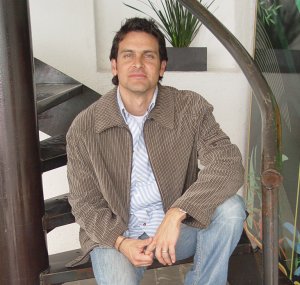Posted by Elena del Valle on April 3, 2007
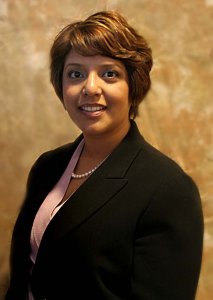
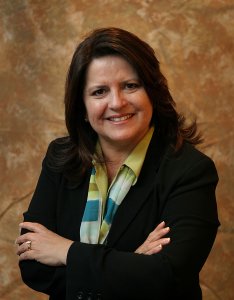
Patricia Pérez and Dolores Arredondo received the Excellence in Business recognition
Photos: La Opinion
A panel of 10 La Opinion employees selected 30 area Latina leaders, professionals and volunteers, in health, education, business, technology and arts and culture for recognition. The women were recognized during a Mujeres Destacadas (Exceptional Women) by-invitation-only luncheon in Los Angeles, California.
The recipients, from Los Angeles County, Orange County, Ventura County, Riverside County and San Bernardino, were selected from 140 entries. The recipients of the excellence in business recognitions were Patricia Pérez, principal, Valencia Perez & Echeveste Public Relations; Maribel Larios, director business development, Benefit Funding Service Group; Dannielle Campos, senior vice president, Bank of America; Dolores Arredondo, vice president of Multicultural Marketing Communications, Wells Fargo; Porfiria Gaona, coordinator, Magic Cleaners, LLC and María del Carmen Salas, president, La Parrilla.
María Gutiérrez Ott, Imelda Quintanar, Ana Cubas, Araceli Sandoval, María Brenes, Susana Zamorano, Cristina José Kampfner, Dolores Carlos, Norma Rosales, Sylvia Estrada, Adriana Velasco, Patricia Osorio, Evelina Fernández, Rita Gómez, Isela Sotelo, Diane Rodríguez, Cristina Aguilar, Argelia Andrade, Teresa Tejada, Patricia Chebac-Reza, Mayra Soriano, Selene Loredo Cárdenas, Maribel Medina and Irma Muñoz were also saluted as outstanding women.
The judges were Leslie Fierro, creative services manager; Blanca Villagomez, advertising creative manager; Lourdes Lopez, supplements coordinator; Hugo Hernandez, national automotive account executive; Martha Estrada, account executive; Tanya Zapata, sales manager, Contigo; Virginia Gaglianone, editor, Contigo; Ruben Moreno, metro reporter; Monica Lozano, publisher and chief executive officer; and Pedro Rojas, executive editor.
“Latino Media and Hispanic Media Training” audio recording


Presenters Federico Suverbi, Ph.D. and Elena del Valle, MBA
Click here to purchase a downloadable or CD audio recording with Latino media and Hispanic media training presentations by Federico Subervi, Ph.D and Elena del Valle, MBA
Posted by Elena del Valle on March 27, 2007
Latino Internet Usage
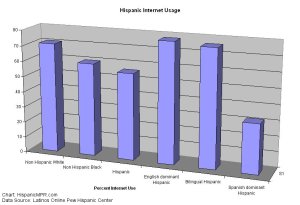
Click on image to enlarge
According to the findings of a recent survey, Latino access to the Internet is linked to English proficiency, educational level and country of origin. Latinos Online, a report by Susannah Fox of the Pew Internet & American Life Project and Gretchen Livingston of the Pew Hispanic Center, indicates Internet usage varies widely among Hispanics depending on language proficiency, educational level and country of origin.
The researchers’ findings indicate only 56 percent of Latino adults visit the Internet; while 71 percent of non-Hispanic whites and 60 percent of non-Hispanic blacks go online. Fox and Livingston believe socio-economic factors such as low educational levels and language limitations play a role in the lower Internet access of this large minority which represents 14 percent of the U.S. market.
The report is based on telephone surveys of 6,016 Hispanic adults between June 2005 and October 2006; and 2,098 non-Hispanic adults in August 2006. Latino respondents had an option to respond in English, Spanish or a combination of both languages.
The report revealed that more than two thirds of English dominant (78 percent) and bilingual Latinos (76 percent) use the Internet while only 32 percent of Spanish dominant adults do so. A significant number of U.S. born Latinos (76 percent) go online while less than half (43 percent) of foreign born Latinos visit the Internet.
Educated Latinos are more likely to go online than uneducated ones. More than two thirds of Latinos with a degree are likely to go online (89 percent). At the same time, 70 percent of Latinos who graduated high school go online but only 31 percent of Latinos who did not complete high school go online. Although Internet access among uneducated non-Hispanic whites and blacks is also low, the percentage of Latinos without a high school degree (41 percent) is noticeably higher than it is for non-Hispanic whites (10 percent) or blacks (20 percent).
Although Mexicans are the largest group of Latinos in the U.S., they are, according to the study, less likely to visit the Internet than other Latinos. Only 52 percent of Hispanics of Mexican descent use the Internet. At the same time, 58 percent of those of Central American origin, 59 percent of Dominican extraction Latinos, 66 percent of Puerto Rican and 64 percent of Latinos of Cuban descent go online. Seventy percent of Hispanics of South American origin go online, making them the most likely Hispanics to surf the Internet.
Latinos also access the Internet by cell phone. More than half of Latino adults (59 percent) have a cell phone and almost half (49 percent) of Latino cell phone users say they send and receive text messages on their phones. On the flip side, a quarter of Hispanic adults have no cell phone or Internet connection.
The Pew Internet & American Life Project and the Pew Hispanic Center are non profit initiatives of the Pew Research Center. The mission of the Pew Hispanic Center is to improve understanding of the Hispanic population and chronicle their impact on the country. The Pew Internet & American Life Project looks at the social impact of the Internet.
“Search Engine Marketing to Hispanics” audio recording

Presenter Matias Perel, founder and president, Latin3
Find out about
- The 16 million Latino online users
- Types of online access among Hispanics
- Latino online user language preferences
- What they do online
- Usage by age
- Income levels among Hispanics who visit the Internet
- Internet use by Hispanics
Click here to purchase a recording about search engine marketing to Hispanics
Posted by Elena del Valle on March 21, 2007
By Patrick Osio, Jr.
Editor, HispanicVista and columnist, San Diego Metropolitan Magazine
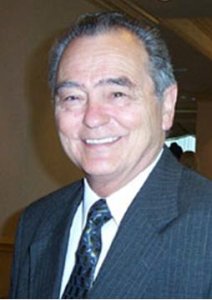
Patrick Osio, Jr.
Mark Krikorian, Executive Director of Center for Immigration Studies (CIS), at what was dubbed a “think tank” conference on January 26th to review immigration issues promoted in part by San Diego University’s Trans-Border Institute (TBI), called on the Department of Homeland Security to use eminent domain to purchase from half-mile to a mile of land along the US-Mexico border, and demolish the buildings to create a “border security zone” to “insulate ourselves” from Mexico.
Krikorian’s bizarre ideas would demolish San Ysidro, and Otay Mesa, in San Diego. Do away with much of Calexico in Imperial Valley, California; Nogales, Arizona, El Paso, Laredo, Brownsville and numerous smaller border towns in Texas.
Click here to read the complete article
Target Latinos effectively by anticipating changes in the market with
“Hispanic Projections” audio recording

Presenter Roger Selbert, Ph.D.
Click here to learn more and to purchase a downloadable or CD audio recording with a presentation by Roger Selbert, Ph.D. on “Hispanic Projections”
Posted by Elena del Valle on March 6, 2007
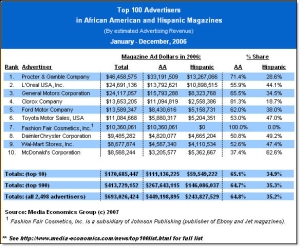
Click on the image to enlarge
Graphic: Media Economics Group
The Media Economics group tracked 2,494 advertisers last year to discover they spent $693.0 million in 2006 to reach multicultural consumers via African American and Hispanic magazines. On average, these advertisers spent nearly two-thirds (64.8 percent or $449.2 million) of their budgets on African American magazines with the balance (35.2 percent or $243.8 million) on Hispanic magazine ads.
These estimates are based on an analysis of the nearly 100 multicultural magazines tracked by Media Economics Group’s BlackMagazineMonitor and HispanicMagazineMonitor competitive intelligence services.
The top five advertisers studied by the Media Economics Group in African American and Hispanic magazines in 2006 were: Procter & Gamble ($46.5 million), L’Oreal USA ($24.7 million), General Motors ($24.1 million), Clorox Company ($13.6 million), and Ford Motor Company ($13.6 million). The bottom five advertisers (among the top 100) in terms of total multicultural magazine spending in 2006 were: Burger King ($1,321,287), Walt Disney ($1,339,986), JC Penney ($1,341,350), BellSouth Corporation ($1,343,881), and Heineken USA, Inc. ($1,362,415).
According to the Media Economics Group findings, there was a wide variation in how the largest advertisers divided their budgets between African American and Hispanic magazines. Some companies spent more than average on African American magazines in 2006. Examples, include: Rocawear (98.8 percent of spending in AA magazines), Pfizer (93.4 percent), PepsiCo (91.6 percent), Nike (89.6 percent), K-Swiss (85.5 percent), American Express (79.1 percent), and Kraft Foods (78.3 percent).
Other advertisers spent a higher share on Hispanic magazine ads than on African American magazines in 2006. These include: JC Penney (98.9 percent of spending in Hispanic magazines), Fruit of the Loom (92.0 percent), Hyundai North America (89.8 percent), Cingular Wireless (80.0 percent), Sears, Roebuck & Co. (76.6 percent), Sara Lee Corp. (72.5 percent), McDonald’s (62.6 percent), Unilever (57.8 percent).
Although the top 100 advertisers are targeting Hispanics and Blacks via magazines, last year most mid-sized advertisers focused exclusively on one segment. Two-thirds of the 604 advertisers who spent between $100,000 and $1 million in 2006, advertised exclusively in either African American or Hispanic magazines.
“While this strategy may make sense for some advertisers to efficiently reach their targets, it may suggest that many exclusive advertisers (e.g. adidas, Citizen Watch Company, DirecTV, Playtex Products, Reebok, S.C. Johnson, Splenda, Wendy’s, etc.) are missing opportunities to reach part of their markets. Savvy publishers should target those exclusive advertisers to increase market share and generate new spending in their segment,” said Carlos Pelay, president of Media Economics Group.
Media Economics Group provides multicultural advertising competitive intelligence for advertising agencies, their clients, and publishers. Clients include leading advertising agencies and media companies active in the multicultural market.
“Latino Media and Hispanic Media Training” audio recording


Presenters Federico Suverbi, Ph.D. and Elena del Valle, MBA
Click here to purchase a downloadable or CD audio recording with Latino media and Hispanic media training presentations by Federico Subervi, Ph.D and Elena del Valle, MBA
Posted by Elena del Valle on February 27, 2007
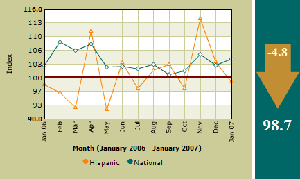
Click on image to enlarge
Graphic: Hudson Employment Index
According to Hudson Employment Index data, worker confidence slid for the second consecutive month for Hispanics, and dropped after a December 2006 rebound for African-American workers in January 2007. The monthly Hudson Employment IndexSM for Hispanics fell 4.8 points to 98.7, and dropped 7.6 points to 84.8 for African-Americans. The composite index, based on responses from approximately 9,000 workers across all races and ethnicities, climbed up 1.5 points to 104.2.
The Hudson Employment Index for Hispanic workers revealed that the number of workers who said their financial situation was getting worse rose ten points in January to 42 percent. There was a five-point decrease in the number of employees expecting their company to hire (33 percent). However, fewer workers also anticipated their company would be reducing headcount in the coming months, 15 percent compared to 18 percent in December 2006. Fewer workers were worried about losing their job in January 2007 (15 percent) than in December 2006 (20 percent).
The Hudson Employment Index for African-Americans found that there was a nine-point drop in the number of workers expecting their company to increase headcount (25 percent), the lowest on record for African Americans. The number of workers who said their financial situation was getting better dropped five points in January 2007 to 35 percent. Compared to December 2006 when 21 percent of the workforce was concerned about losing their jobs, 23 percent made that statement in January 2007.
“While not discounting the positive implications of the improvement in the Index, the start of the year tends to reveal a greater sense of optimism, resulting from fresh budgets, new hiring plans and generally high hopes for the year,” said Steve Wolfe, senior vice president, Hudson. “The true test will be in the months to come if the record low concerns around layoffs and job security concerns are sustained.”
The Index also showed workers in general felt more secure in their current employment in January 2007. That month the number of workers concerned about losing their own job fell two points to 16 percent. There was a one-point decrease in the number of employees expecting their companies to lay off staff, down from 15 percent in December 2006. Job satisfaction began to rebound in January 2007, as the number of individuals happy with their job rose one point to 74 percent. There was a one-point decrease to 37 percent among employees who indicated their finances were getting worse.
Posted by Elena del Valle on February 14, 2007

Nacho Hernandez Jr. and Ignacio Hernandez of MexGrocer.com
Photo: MexGrocer.com
MexGrocer.com has a solution for home sick Mexicans and Mexican food lovers. The online grocery store sells Mexican food products and ingredients to over 12,000 cities in the 50 states and recently consolidated operations.
The San Diego based distributor’s website offers 1,200 hard-to-find, non-perishable Mexican food items, household products, cooking tips, Mexican recipes and Mexican cookbooks. MexGrocer.com was founded by Ignacio Hernandez and Nacho Hernandez Jr. in 2000.
“This is just one of several important changes we will be implementing in 2007 to provide our consumers with a much better service level and product offering,” said Ignacio Hernandez, president, MexGrocer.com.
Shopping categories on the website are Beverages, Canned Foods, Rice-Beans-Pasta, Ingredients, Desserts, Mexican Candy, Snacks & Cookies, Chili Peppers, Hot Sauces, Salsas & Mole, Spices & Herbs, Tortillas & Tamales, Mexican Food, Foodservice Mexican, Household & Religious Items, Cooking Utensils, Mexican Food, Cookbooks, Gift Certificates, and Gourmet Food Store.
“Latino Family Dynamics” audio recording


Brenda Hurley and Liria Barbosa
These two experts will help you make your Latino family campaign a success. Find out about reaching Latino families, adapting general market messages when targeting Latinos, adapting products and services when targeting Latinos and much more.
Click here for inforamation on Latino Family Dynamics
Posted by Elena del Valle on February 13, 2007
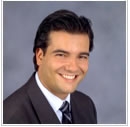
Entrepreneur Francisco Martin
Photo: Francisco Martin
Woodland Hills, California – Azure Group, Inc. founders and Los Angeles entrepreneurs Bill Anz and Francisco Martin plan to open a Latin-focused federal savings and loan bank, Banco Unido FSB, August 2007. Although Banco Unido, FSB has not yet been granted its charter by the Office of Trade Supervisions, Anz and Martin have been working on a banking venture for the last three years and are confident of their success. The first branch, to be located in North Hollywood (Los Angeles), is expected to be capitalized with $20 million.
Following the launch of the Encino based mortgage bank, Mortgage Capital Corporation of America, the entrepreneurs are ready for the next step. The future bank founders are former MAM Group, Inc. founders.
“The idea was to create an infrastructure to originate and fund Mortgage Loans, with the ultimate intent to either merge the operation into a commercial bank or savings and loans institution. The Mortgage Operation offers many benefits to us. We have instant access to all the pertinent information, which allows us to target our clients with more relevant financial products,” said Anz.
“Latinos who become banking customers for the first time may gain access to one key element of the ‘American dream,’ credit. Through personal loans, credit cards, and home mortgages, previously unbanked Latinos may improve their economic status and begin to accumulate assets,” said Martin.
He indicated they endorse passive investments (indexing) and a method based on the efficient market theory, completely opposite to active investments, stock picking and market timing. They pick sectors and countries by selecting specific indexes. The results are based on highly diversified investment vehicles. Then they scale the method to small investment accounts of less than $5,000.
“This gives the smaller investor the access to sophisticated investment diversification that one would only see open to multimillion dollar portfolios. You can expect Banco Unido to be the universal banker to the Latin Community. From mortgage loans, investments, personal loans to checking and savings accounts, Banco Unido will serve this community to an extend that was only privy to the well-heeled of our society.”
“Hispanic Projections” audio recording

Presenter Roger Selbert, Ph.D.
Click here to learn more and to purchase a downloadable or CD audio recording with a presentation by Roger Selbert, Ph.D. on “Hispanic Projections”
Posted by Elena del Valle on February 8, 2007
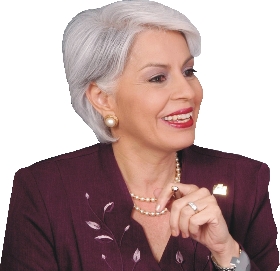
Lourdes Aponte-Rosario, president, HBWA and publisher of Latinamarketplace.com
Photo: Lourdes Aponte-Rosario
San Juan, Puerto Rico – The Hispanic Business Women’s Alliance (HBWA) launched a new, interactive online directory of Latina business owners and professionals at Latinamarketplace.com. For a $25 annual fee, Hispanic women in the United States, Puerto Rico, and the U.S. Virgin Islands can be added to the 279 listings. The directory, which features listings in English and Spanish, is designed to help Internet shoppers find and do business with Latina business owners and professionals.
“According to the latest U.S. Bureau of the Census report (2002), there are 540,909 Latina owned businesses in the United States and another 111,287 Latina businesses jointly owned with a male partner. All are excellent prospects to be registered in this new Directory,” said Lourdes Aponte-Rosario, president of HBWA and publisher of the online directory.
Researchers believe that Latinas represent the fastest growing entrepreneurial sector in the U. S. business community. According to the Center for Women’s Business Research’s 2004 biennial update, firms owned by women of color are growing at six times the rate of all U.S. The publishers of the directory expect their organization’s collaborative efforts with local Hispanic chambers of commerce and Latina organizations to boost the number of listings on the website.
“Until now, most Latina entrepreneurs and professionals listed in the directory did not have a presence in the Internet. Latina owned start-ups will now have the opportunity to market their products or services via the Internet in an easily accessible and attractive format,” said Aponte-Rosario.
The directory allows Internet shoppers to quickly locate Latina owned firms by business category based on the North American Industry Classification System (NAICS Code), product/service key word, company name, street address, city, state, and zip code. In addition, shoppers can find the Latina business via a map locator.
Aponte-Rosario also anticipates that non-Hispanic business owners seeking to penetrate the rapidly growing U.S. Hispanic market will utilize the new online directory to identify potential Latina suppliers, clients or strategic partners.
19 national experts share useful information on how to reach Hispanics effectively in
Hispanic Marketing and Public Relations Understanding and Targeting America’s Largest Minority book

Click here to see the table of contents and to buy your copy today!
Posted by Elena del Valle on February 2, 2007
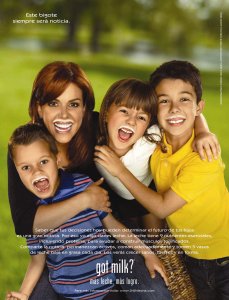
Maria Celeste Arrarás joins Hispanic Milk Mustache campaign
Photo: Milk Processors Education Program
Washington, DC– TV personality Maria Celeste Arrarás joined the Milk Processors Education Program (MilkPEP) milk mustache campaign. The popular campaign strives to encourage Hispanic moms to drink milk every day to “maintain their weight and help build lean muscle mass.” As part of the promotional efforts Maria Celeste and her three children sporting a milk mustache appeared in Hispanic ads in print magazines nationwide January 2007.
Promotional materials point to a 2005 study on weight loss in African Americans by MB Zemel, J. Richards, A. Milstead, and P. Campbell that indicates drinking low-fat and fat free milk may be good to develop strong bones, help adults maintain a healthy weight and build toned lean muscle mass; and data from the Centers for Disease Control and Prevention (CDC) indicating that more than one third of Hispanics in the United States are obese.
“I am thrilled to be a part of this campaign because as a celebrity I think it’s important to try to convey useful, health-related information to Hispanics. And that is very important given the high obesity rates amongst Hispanics.” said Arrarás.
Find out how to reach Latinos through TV and Radio campaigns with
“Electronic Publicity and Broadcast Public Relations” audio recording

David Henry presenter
Find out
Click hereto purchase a downloadable or CD audio recording with a presentation on Electronic Publicity and Broadcast Public Relations by David Henry
Although most people focus on what’s on their plate when thinking of maintaining a healthy weight what’s filling their glass may also be important. Milk campaign promoters point to a 2006 study by VS Malik, MB Schulze, and FB published in the American Journal of Clinical Nutrition that indicates that over the past 30 years there has been a significant increase in the consumption of sugary soft drinks while milk consumption has declined. They believe the increase in consumption of calorie and sugar filled drinks may be linked with unhealthy weight gain and high levels of body fat among children and teens.
“We consume a lot more calories from our drinks than we are aware of. Our kids are faced with a lot of beverage choices and we need to help them navigate through these choices. Milk is nature’s ultimate beverage. It’s the only beverage that naturally contains 9 nutrients including calcium and protein that help maintain a healthy weight and builds lean muscle mass,” Arrarás.
Parents are instrumental in teaching their kids healthy eating habits from an early age. Although there were no Latino specific studies cited, promoters pointed to a 2004 study published in the American Journal of Clinical Nutrition indicating that the children of moms who regularly drink milk and make it available at family mealtimes are more likely get enough calcium as they enter adolescence, a critical time for bone growth and development.
Arrarás is an Emmy award winning journalist and one of the best known TV news personalities on Spanish language television. The Milk Processor Education Program (Milk PEP), is funded by the nation’s milk processors, who are committed to increasing fluid milk consumption. The Milk PEP Board runs the national Milk Mustache “got milk?” Campaign, a multi-faceted campaign designed to educate consumers about the health benefits of milk. The tagline “got milk?”(R) was created for the California Milk Processor Board by Goodby Silverstein & Partners and is licensed by the national milk processor and dairy producer groups.
Posted by Elena del Valle on February 1, 2007
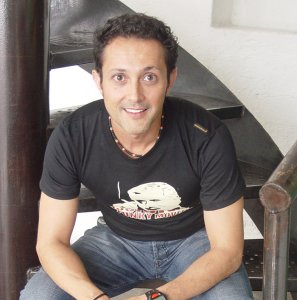
Javier Escobedo, Ole managing partner
Photos: Ole
New York, New York — Ole, a New York-based advertising agency focused on the U.S. Hispanic market, is undergoing an organizational restructuring as it enters into its fourth year of operation. The changes include a new creative director and new business unit divisions.
“We have grouped the fastest-growing areas of our agency under strong leaders, ensuring that we maintain our high quality in the multiple services we provide to clients,” said Javier Escobedo, Ole managing partner. “This will further increase client and team satisfaction, paving the way for continued growth by providing our clients with the specialized marketing services they need.”
On the creative side, Paco Olavarrieta, who had been creative partner since Ole’s founding, decided to pursue other interests. He will be succeeded by Carlos “Charly” Tornell who, since early 2006, has been the leader of Ole’s Mexico City creative office. A 15-year advertising veteran, he now takes overall creative director role at Ole while maintaining his duties in Mexico City.
“This office was created via a partnership with local independent shop Oveja Negra, enabling Ole’s clients to benefit from the vast top-notch bilingual and bicultural talent pool available in Mexico,” said Tornell.
Carlos Tornell, Ole creative partner
The new organization will maintain the Strategy & Research Business Unit led by Monica Sanchez who becomes partner. The three new business units and newly promoted business unit directors are: Bruni Topete heading Online, Alternative Media and Language Services; Gabriel Velasco in charge of Planning and Below-the-Line Marketing; and Marlene Roque in charge of Creative Management. Media will continue to be led by Monica Camacho as business unit manager. In addition to their operational responsibilities, each of the business unit directors retains their client management duties and will continue to service their current accounts.
Ole, based in New York City, is an independent, full-service, advertising agency focused on the U.S. Hispanic market. Ole has clients from a variety of industries including retailing, financial services, food, media, household cleaning products and non-profit organizations.
Find out which Latino markets are booming with
“The Next Step: Secondary Latino Markets” audio recording

Presenter Dora O. Tovar, MPA
Click here to purchase a downloadable or CD audio recording with a presentation by Dora O. Tovar on secondary Latino markets



















